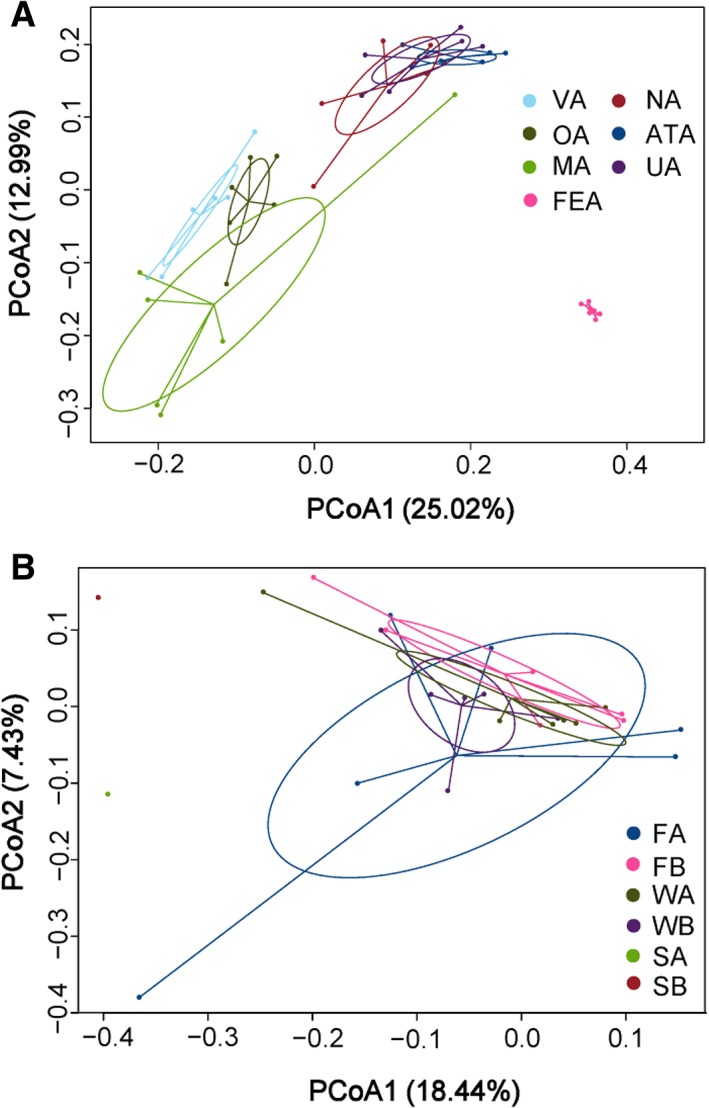Figure 2.

Principal coordinates analysis (PCoA) of the bacterial communities from maternal (A) and environmental (B) sources. PCoA was used to assess the differences in the composition of bacterial communities between samples and to visualize the potential clustering of samples. Each point represents a different sample calculated using unweighted UniFrac distance according to OTUs composition and abundance. The greater the distance between two points, the lower the similarity between them, whereas samples with more similar bacterial communities cluster closer together. VA: maternal vagina; OA: maternal oral cavity; MA: milk from birth mother; FEA: maternal stool; NA: maternal teat skin; ATA: maternal abdominal region skin; UA: maternal udder skin; FA: sheep pen floor of suckled group; WA: pen wall of suckled group; SA: ambient air of suckled group; FB: sheep pen floor of bottle‐fed group; WB: pen wall of bottle‐fed group; SB: ambient air of bottle‐fed group. Except for the SA and SB, the sample size of each maternal and environmental niche was 6. The ambient air microbes of each group were sampled using the same gelatin membrane filter for three consecutive days, so both SA and SB had a sample size of 1. [Color figure can be viewed at http://wileyonlinelibrary.com]
